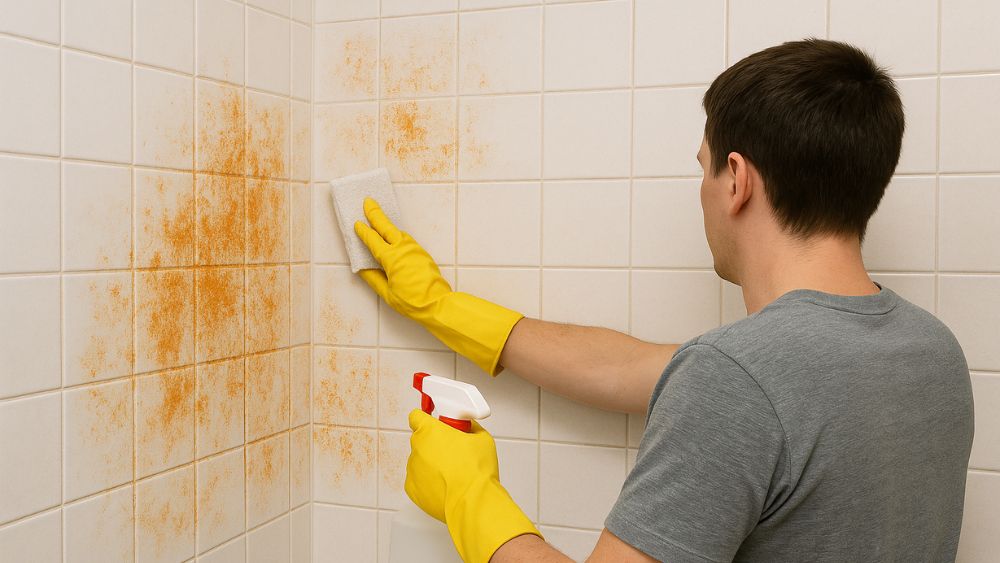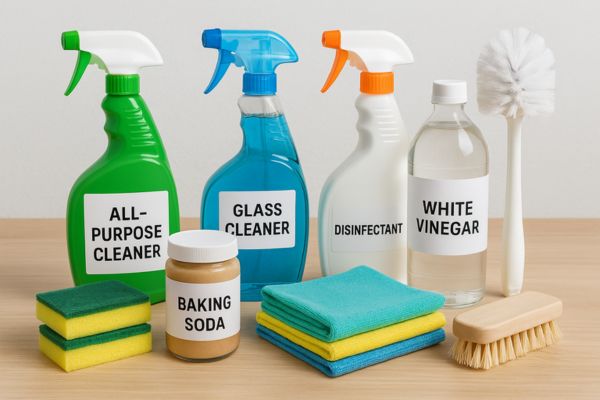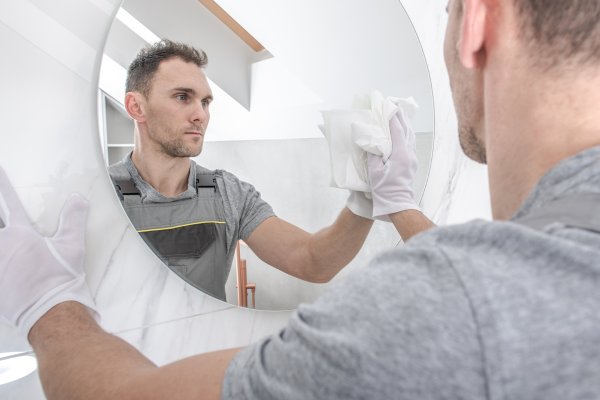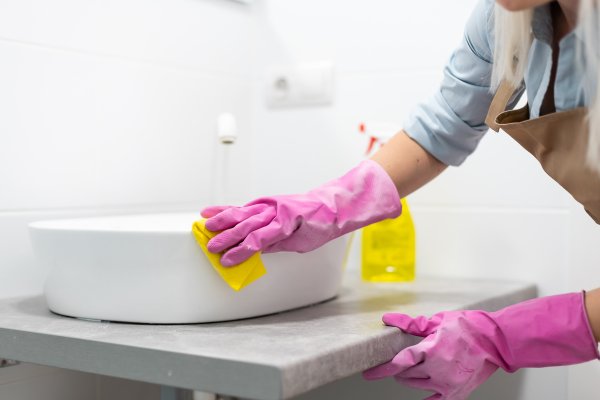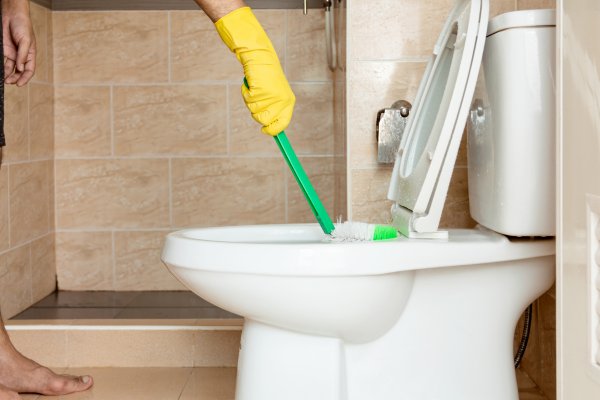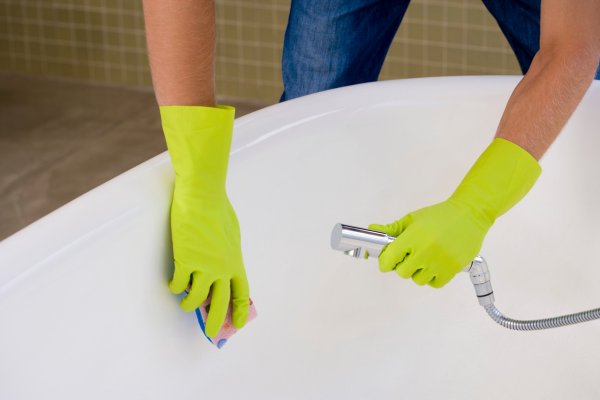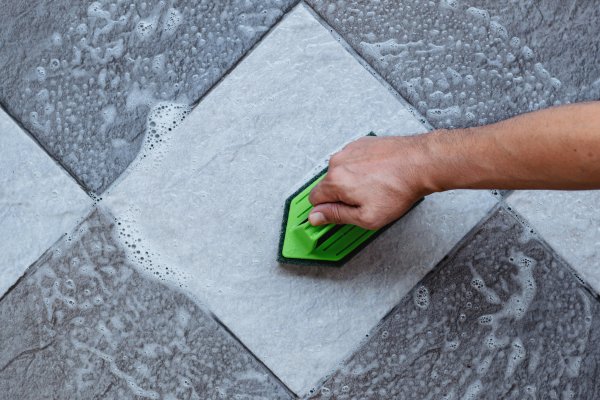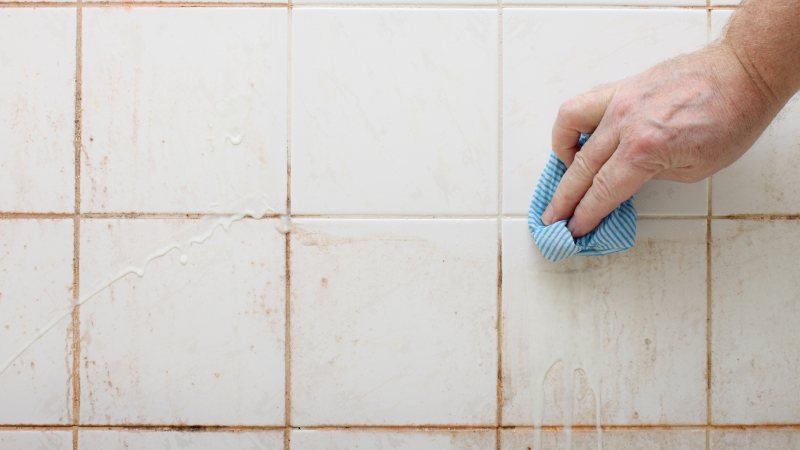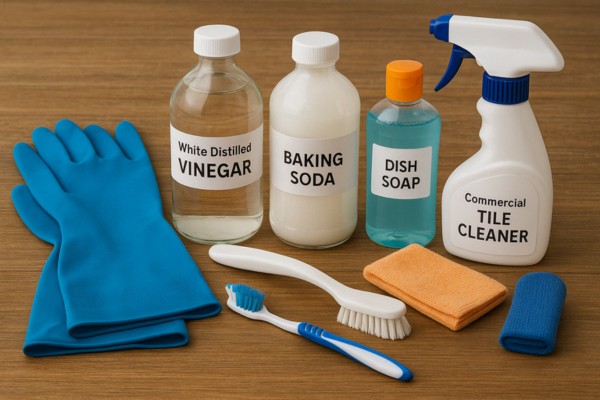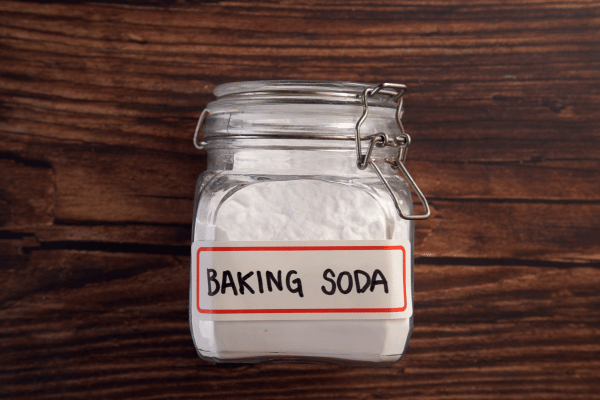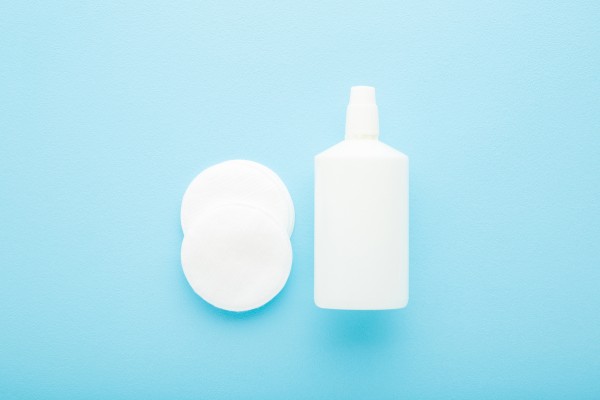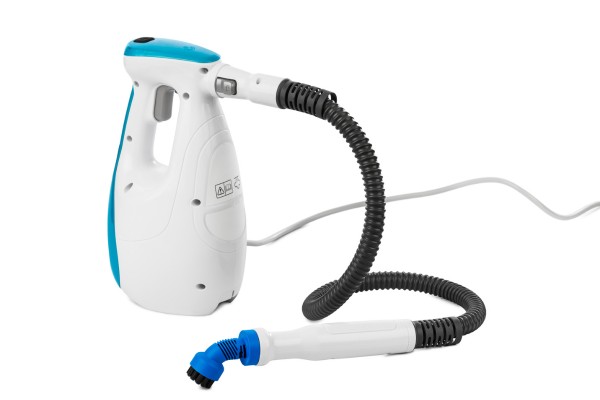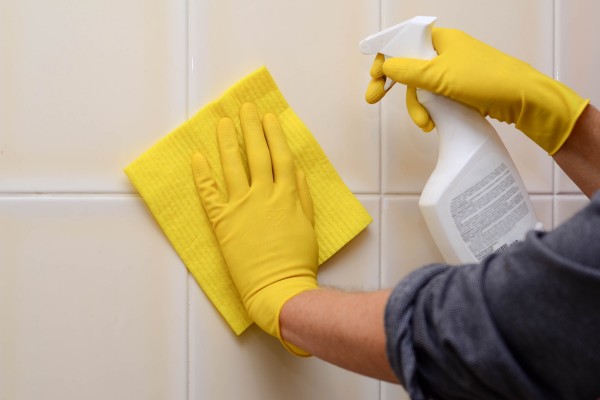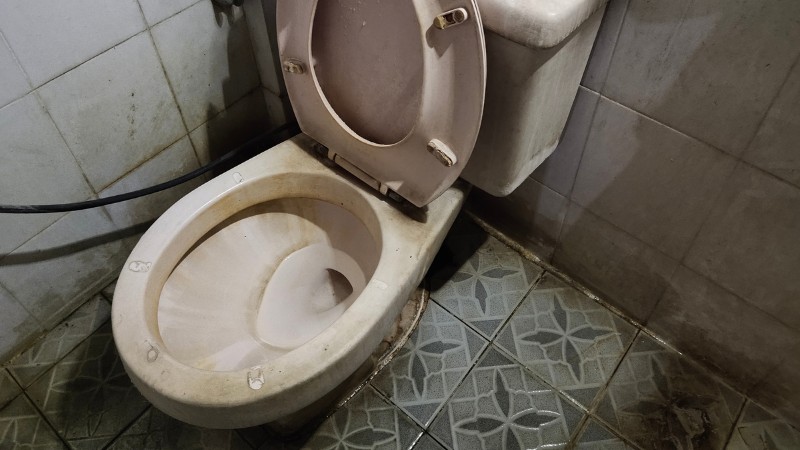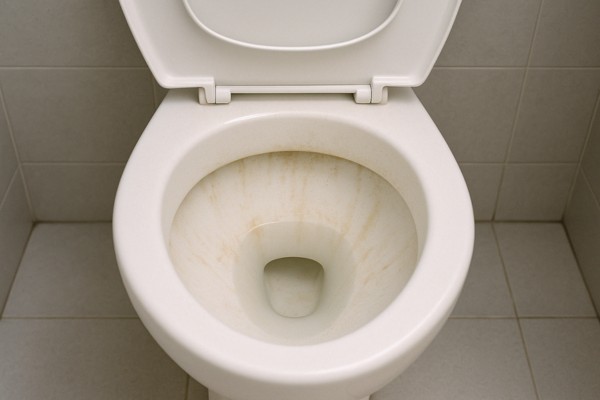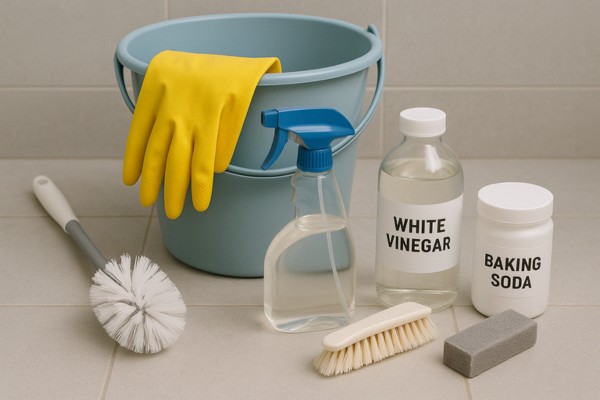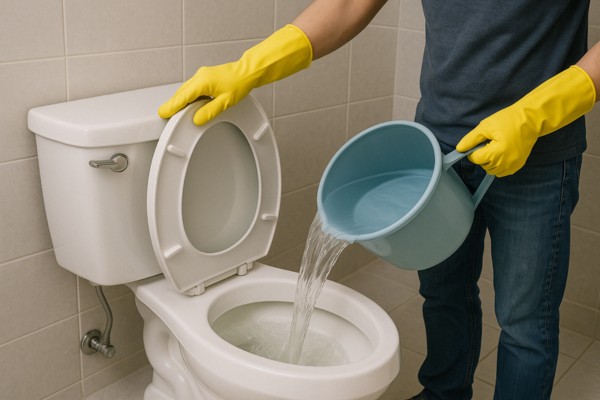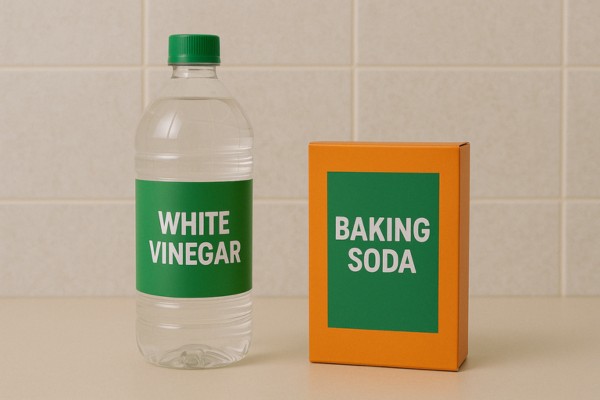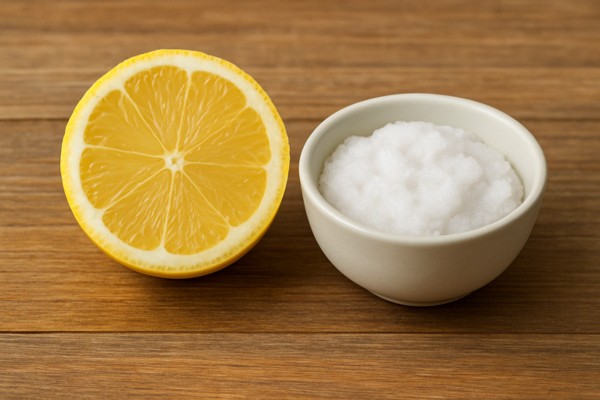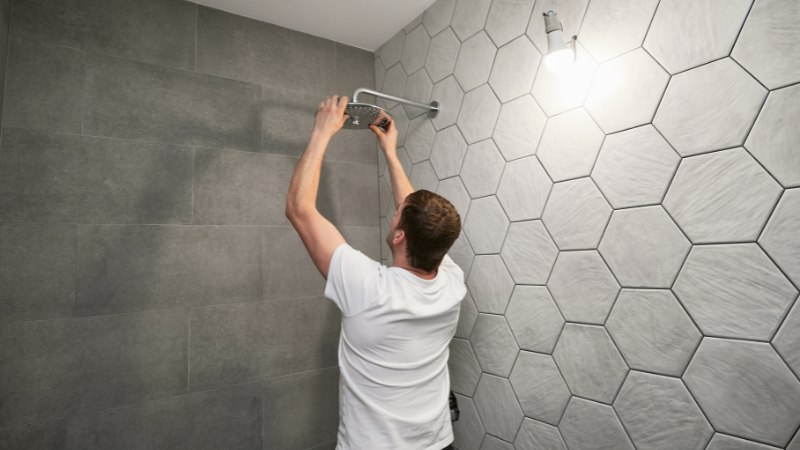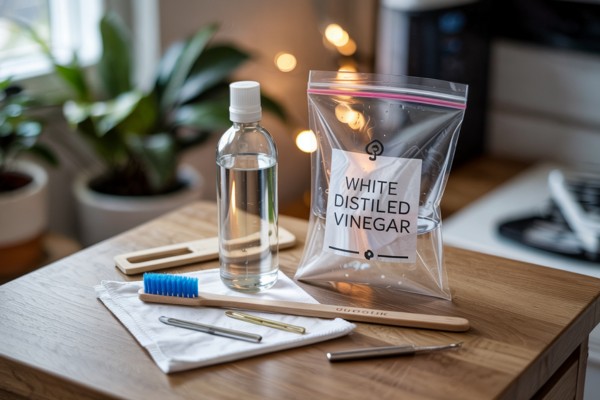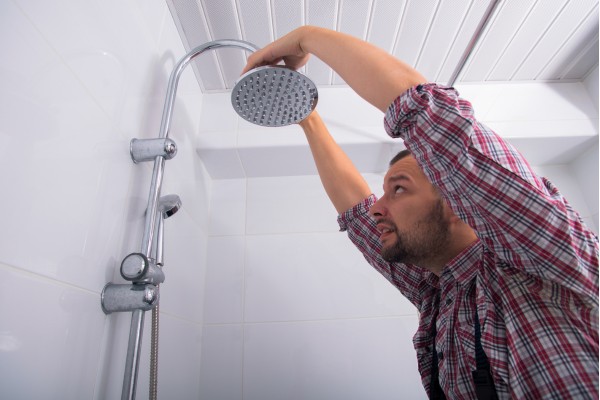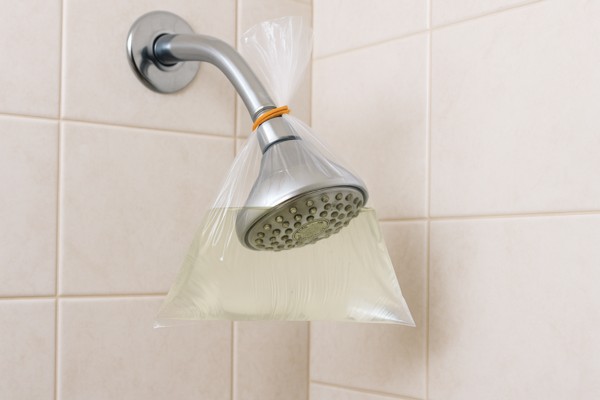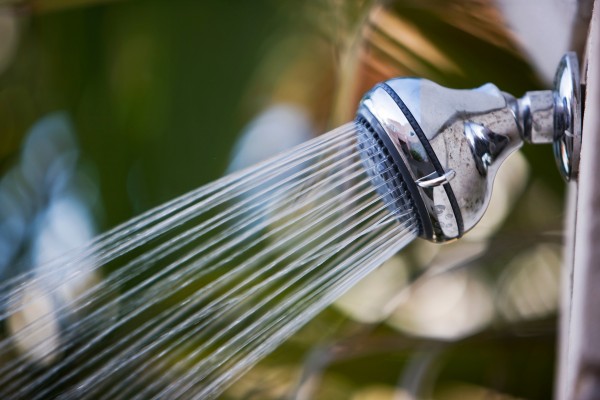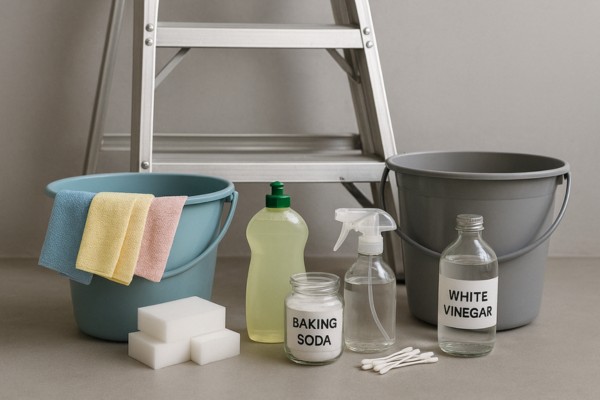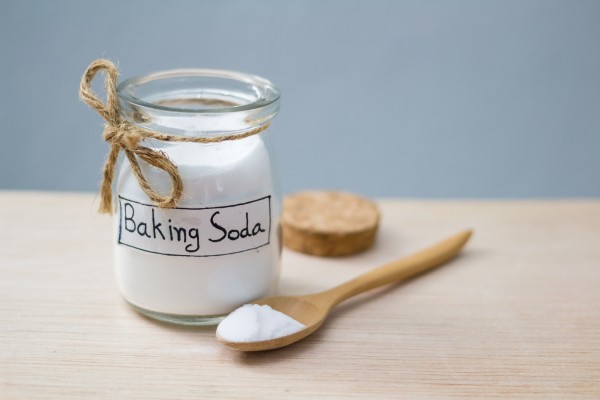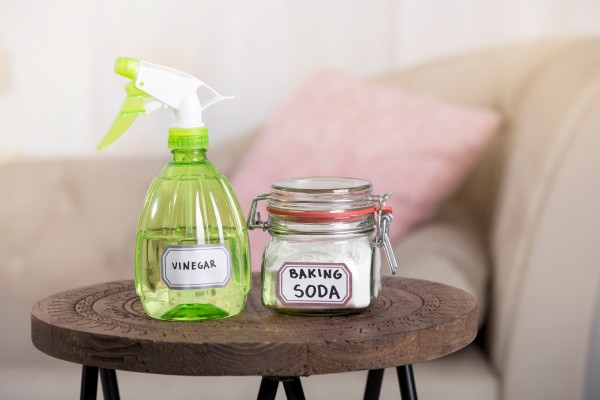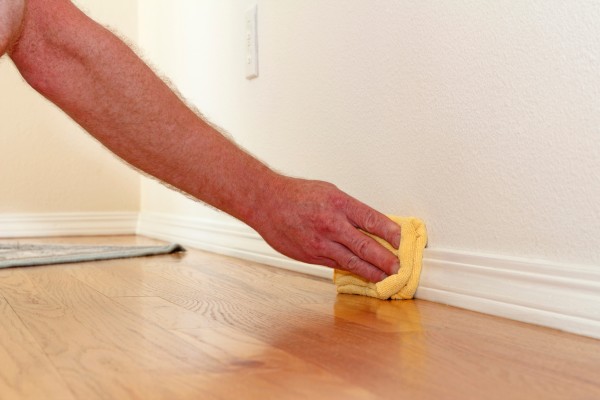It starts with a faint, reddish-orange stain creeping across your shower walls. You scrub it off, but it keeps coming back—and soon, your bathroom feels less like a place to refresh and more like a science experiment.
That mystery stain? It’s not just soap scum or hard water. It’s likely Serratia marcescens—a type of bacteria better known as orange mold.
Thanks to the steamy aftermath of a hot shower, excess moisture, and not-so-great airflow, your bathroom becomes a five-star resort for mold spores. And while orange mold may look tame compared to black mold, it can still mess with your air quality and trigger health issues like allergies or respiratory irritation.
Ready to take back your shower? In this guide, you’ll learn how to spot orange mold, get rid of it for good, and most importantly—keep it from returning.
Here’s what you need to know to stop it in its tracks—before it becomes a bigger problem.
What is Orange Mold in the Shower?
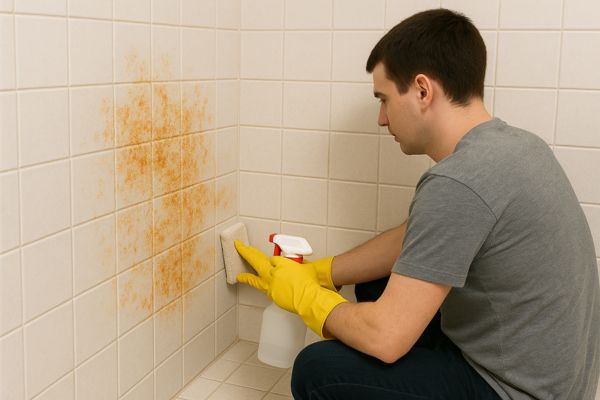
Orange mold in your shower isn’t just a stubborn stain—it’s often Serratia marcescens, a reddish-orange bacteria that forms slimy streaks or blotches along shower walls, grout lines, and corners where moisture tends to linger.
While it might resemble rust or hard water stains at first glance, this invader behaves very differently. Touch it, and you’ll feel a moist, spongy surface that springs back slightly—until it dries out and becomes nearly impossible to scrub away.
This type of bacteria doesn’t discriminate when it comes to surfaces. From your tiles and cast iron fixtures to your toilet bowl or even wooden window frames, orange mold grows wherever excess water, soap scum, and body oils provide fuel.
Bathrooms, especially those with high humidity and poor ventilation, offer the perfect combination of warmth and organic materials for it to spread.
One of the most common mistakes is confusing it with mineral deposits or rust caused by high iron in your water.
But while rust won’t affect your breathing, this bacteria might. Serratia marcescens has been known to trigger allergic reactions, skin irritation, and even respiratory symptoms like coughing or wheezing—especially if you already have asthma or a sensitive immune system.
According to the CDC, Serratia marcescens is resistant to some disinfectants and can survive on damp shower surfaces for weeks if left untreated.
If you see reddish-orange blotches along your shower curtain, grout, or around plumbing fixtures, it’s time to act before the blemish spreads further.
What starts as a cosmetic issue can quickly turn into something that affects your comfort—and your health.
What Causes Orange Mold in Your Shower?
It’s not just about having a messy bathroom—orange mold shows up even in the most polished spaces if the conditions are just right.
Imagine you step out of a hot shower, the room fogs up, droplets cling to the tiles, and warm air has nowhere to go. That leftover moisture isn’t just an afterthought—it’s an open invitation for mold spores to settle in and multiply.
Showers are designed to be hotspots for humidity. Constant exposure to water, especially in homes without proper ventilation, creates the perfect storm. If your bathroom lacks an exhaust fan or an open window, all that moisture hangs in the air—and so does the risk of orange mold bathroom infestations.
In fact, high humidity alone can boost mold growth by nearly tenfold if it’s not kept in check.
But it doesn’t stop with dampness. Soap scum, shampoo residue, and even body oils left behind on your shower surfaces act like a buffet for bacteria. Over time, this residue collects in grout lines, around plumbing fixtures, or in the corners where cleaning tools barely reach.
Infrequent cleaning only accelerates the problem. Those “I’ll get to it later” zones—behind the toilet, under the shower curtain, around the drain—are where mold spores thrive. If your home has hard water, the mineral content adds another layer of trouble.
The buildup attracts reddish-orange stains and makes mold growing inside sinks and drains even more common.
Without regular cleaning, a water softener, or proper airflow, these subtle oversights turn your bathroom into a playground for bacteria like Serratia marcescens. And once orange mold settles in, it rarely leaves without a fight.
7 Methods to Eradicate Orange Mold in the Shower
1. Call in the Pros: Why Professional Cleaning Services Are the Best Option

Some battles are best left to the experts—especially when your shower’s orange mold problem isn’t just a few patches on the tile but creeping into walls, grout lines, or even flooring.
If your bathroom looks like it’s growing its own science experiment, it might be time to skip the spray bottle and bring in a trained cleaning crew.
That’s where professional services like Modern Maids come in. Unlike your average DIY routine, pros use commercial-grade cleaning solutions that target orange mold without damaging your shower surfaces.
From grout lines to the base of your plumbing fixtures, they reach the places most people overlook—and they do it without relying on harsh chemical cleaners.
Plus, many services now use eco-friendly products that are safe for kids, pets, and anyone with sensitivity to airborne bacteria or mold spores.
That peace of mind alone can make the investment worth it—especially if you’ve tried to clean orange mold yourself more than once and it keeps returning.
And here’s the thing: while DIY methods may take care of what you can see, Modern Maids offers scheduled deep cleaning that helps prevent orange mold from coming back in the first place. It’s not just about cleaning—it’s about keeping your shower mold-free for the long haul.
If you are still interested in managing this all by yourself, read ahead and try them out.
2. Clean with White Vinegar and Water Solution

If you’re the kind of person who loves a good DIY challenge, vinegar might just become your new best friend in the fight against orange mold. It’s simple, effective, and probably already sitting in your kitchen cabinet.
Orange stains, especially along grout lines and corners, are often caused by hard water and soap scum buildup.
To clean orange mold naturally, start by mixing equal parts white vinegar and water in a spray bottle. Distilled white vinegar is your best bet—it cuts through mineral deposits and helps kill mold spores without damaging shower surfaces.
Generously spray the solution on all affected areas—tiles, grout lines, the shower curtain hem, and anywhere orange mold likes to hide. Let it sit for 10 to 15 minutes so it can break down the biofilm and loosen up any stubborn buildup.
Grab an old toothbrush or soft scrub brush and gently work over the surface. Once the grime starts lifting, rinse thoroughly with warm water. To avoid future mold growth, let everything air dry completely. This step alone can make a noticeable difference in your bathroom’s freshness and hygiene.
Vinegar may smell a bit sharp at first, but it’s a powerhouse when it comes to non-toxic mold removal—and it won’t damage your tiles in the process.
3. Use Hydrogen Peroxide to Disinfect and Clean Mold
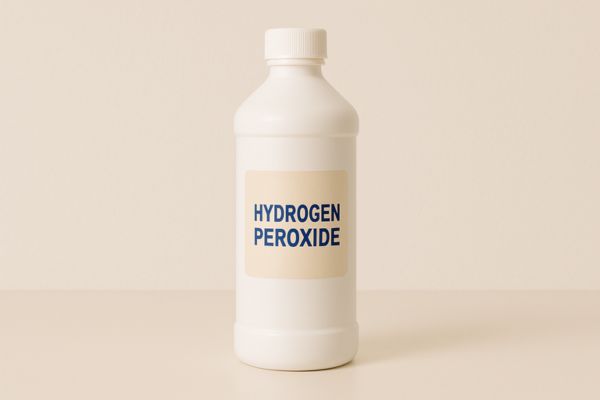
Not a fan of the strong smell of bleach? You’re not alone—and luckily, you don’t need it to take on orange mold.
Hydrogen peroxide offers a powerful, low-odor alternative that’s tough on bacteria but gentle on most bathroom surfaces.
A 3% hydrogen peroxide solution—readily available at any pharmacy—is one of the most underrated cleaning solutions when it comes to mold removal. It doesn’t just clean orange mold; it disinfects, breaking down the mold spores and sanitizing the area as it works.
To use it, pour hydrogen peroxide into a spray bottle and apply it directly onto the orange-stained areas of your shower walls, grout, or plumbing fixtures. Let it sit for 10 to 15 minutes so it has time to penetrate the bacteria and loosen its grip.
Next, scrub the affected areas with a soft-bristled brush or sponge, making sure to hit corners and grout lines where mold growth is common. Finish with a thorough rinse using warm water, and allow the surfaces to dry completely.
Hydrogen peroxide not only helps disinfect, it also works as a mild whitening agent—leaving your shower looking cleaner and brighter without the harsh effects of chemical cleaners.
4. Scrub with Baking Soda Paste for Tough Mold Stains
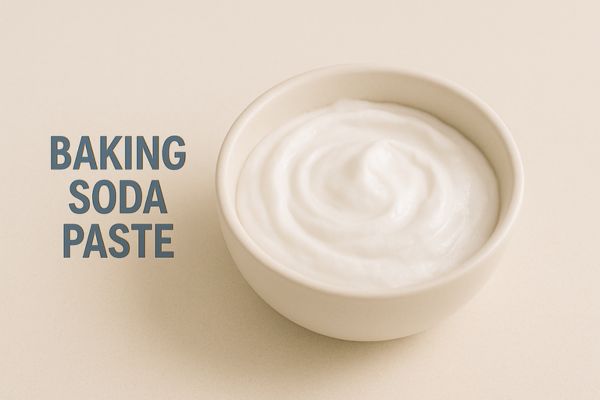
When orange mold won’t budge and the usual sprays just aren’t cutting it, it’s time to bring out the heavy hitter hiding in your pantry—baking soda.
This everyday staple does more than freshen your fridge; it’s a quiet powerhouse when it comes to cleaning stubborn mold from your shower.
What makes baking soda so effective?
It alters the surface’s pH level, making it too alkaline for mold spores to thrive. Thus, you’re not just removing the orange mold—you’re creating an environment that discourages it from coming back.
To get started, mix baking soda with just enough water to form a thick paste. Apply it generously over the moldy areas—grout lines, corners, or anywhere reddish-orange spots are forming. Then scrub with a stiff brush or an old toothbrush.
Thanks to its mild abrasiveness, baking soda lifts away mold stains while gently scouring the surface without damage.
Once you’ve finished scrubbing, rinse everything thoroughly with warm water. You’ll not only clean orange mold but also deodorize the space. And here’s a bonus—baking soda absorbs excess moisture, which helps slow down future mold growth in damp areas like your shower.
For extra staying power, you can leave a light layer of baking soda on grout lines overnight before rinsing again the next morning.
A simple trick, but one that goes the extra mile in keeping your bathroom fresh and mold-free.
5. Use a Commercial Mold Cleaner for Persistent Mold
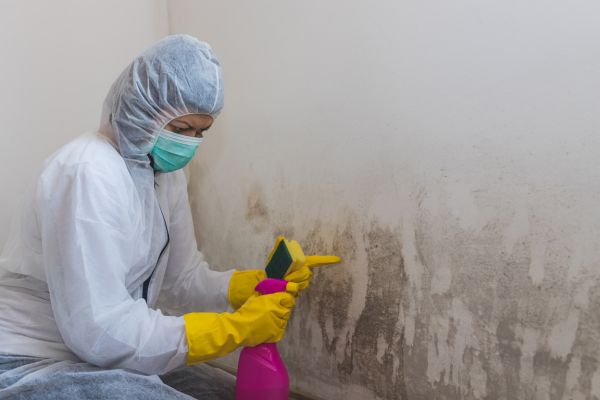
Sometimes, despite your best efforts with vinegar, baking soda, and elbow grease, the orange mold just won’t give up.
When the usual go-to methods fall short, it might be time to reach for a commercial mold remover made specifically for bathroom use.
These cleaning products are designed to tackle tough, embedded stains and eliminate mold spores quickly—especially in areas that see frequent moisture buildup like shower walls, grout lines, or plumbing fixtures.
Just be sure to read the label before you spray. Some cleaners contain strong chemicals like bleach or ammonia, which can be harsh on certain surfaces or grout colors.
If your tiles are colored or your shower features natural stone, opt for a non-bleaching formula that’s safe for those materials. Always use protective gloves and make sure the area is well-ventilated by opening windows or turning on your exhaust fan.
While chemical cleaners aren’t always the first choice, they can be a reliable backup when orange mold becomes persistent and widespread.
Think of them as your last line of defense when natural solutions don’t cut it—and a powerful one when used with care.
6. Improve Bathroom Ventilation to Prevent Future Mold Growth
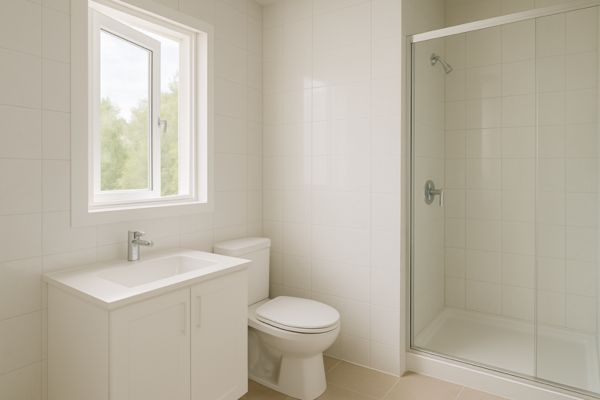
Getting rid of orange mold is only half the battle—the real win is making sure it doesn’t come back. And that all starts with how you manage moisture after every shower.
Even the cleanest bathrooms can fall victim to mold if the air has nowhere to escape.
Humidity is the root cause of most bathroom mold issues, and without proper airflow, you’re basically inviting mold spores to move right back in.
One of the simplest ways to prevent orange mold from returning is by improving your bathroom’s ventilation. If you already have an exhaust fan, use it every time you shower—and leave it running for at least 15–20 minutes afterward to clear out lingering moisture.
If your bathroom has a window, open it during and after your shower to let in fresh air. Even a small amount of air circulation can help dry out damp areas and reduce the chances of mold growth.
You can also take an extra step by wiping down wet shower surfaces, tiles, and glass doors with a towel. It may seem small, but removing that excess water can make a big difference.
These small adjustments help lower humidity, starve mold of the moisture it needs, and give you a cleaner, healthier bathroom over time. It’s all about staying one step ahead.
7. Regular Cleaning and Maintenance

Once the orange mold is gone, the last thing you want is for it to make a comeback. And truth be told, it will—unless you stay ahead of it.
Mold thrives on neglect, which means the best long-term solution isn’t a one-time scrub, but consistent care.
Start by making weekly tile cleaning part of your routine. A quick wipe-down of your shower walls, grout lines, and corners can prevent buildup before it turns into something slimy or reddish-orange.
For added protection, consider using mold-resistant grout or tiles if you’re renovating—it makes a noticeable difference in both appearance and effort.
If you live in a humid climate, bathroom moisture control becomes even more critical. Dehumidifiers or even small silica gel packs tucked into corners can quietly absorb excess water from the air and stop mold before it starts growing.
And let’s not forget the golden rule: keep air moving. Whether through an exhaust fan or by opening windows, ventilation is non-negotiable.
Want a set-it-and-forget-it kind of solution?
Scheduling a monthly deep cleaning with Modern Maids is a smart way to keep your bathroom in check.
Their team handles all the overlooked areas and stubborn grime—so you don’t have to. Regular maintenance isn’t just about cleanliness; it’s about peace of mind.
Need Help Getting Rid of Mold? Let Modern Maids Handle the Hard Work!
If you’re tired of scrubbing grout lines or battling the same orange mold in your shower week after week, it’s time to bring in backup. At Modern Maids, we specialize in the deep clean your bathroom actually needs—not just surface-level shine.
Our expert team uses non-toxic, effective products to clean orange stains, disinfect hidden corners, and restore your bathroom to a safe, fresh space. Whether it’s stubborn buildup or mold you can’t see but definitely smell, we’ve got it covered.
Call us at (469)-430-8860 Or book your mold-fighting bathroom cleaning online: modern-maids.com/booking-page
You focus on enjoying your next hot shower—we’ll focus on making sure the only thing lingering is the steam.
FAQs
Is orange mold harmful?
Yes, orange mold in shower can be more than just an eyesore. While it’s technically a type of bacteria—often Serratia marcescens—it can still trigger health problems, especially in people with allergies or asthma. Prolonged exposure to mold spores in damp areas like showers can lead to skin irritation, respiratory issues, or allergic reactions. Even if it’s not as dangerous as black mold, it’s best to clean orange stains thoroughly and prevent buildup through regular cleaning and proper ventilation.
What causes orange buildup in the shower?
Orange buildup in the shower is usually caused by a mix of soap scum, body oils, hard water, and high humidity. These conditions create the perfect environment for orange mold to grow, especially in grout lines, around plumbing fixtures, and on other moist surfaces. If your water has high iron or mineral content, it can worsen stains and contribute to mold growth. Infrequent cleaning and poor airflow allow moisture and mold spores to settle in and multiply over time.
Is orange mold toxic to humans?
While not classified as highly toxic like black mold, orange mold—often caused by Serratia marcescens—can still pose risks. It may not release mycotoxins, but the bacteria can contribute to health issues if left untreated. Breathing in mold spores or coming into contact with affected areas in a damp, enclosed space like a shower may lead to allergic reactions, sinus irritation, or even infections in people with weakened immune systems. To stay safe, it’s important to clean orange mold as soon as it appears.
Can breathing in mold from an orange make you sick?
Yes, breathing in mold—whether it’s growing on a piece of fruit or in your shower—can make you sick. Mold spores, including those found in orange mold, are airborne and can cause coughing, sneezing, sore throat, or breathing difficulties. In showers, where moisture lingers and mold spores thrive, exposure can be more frequent. If you have underlying respiratory conditions or allergies, even small amounts of mold in the air can trigger symptoms. Always remove moldy items and keep humid areas well-ventilated.
